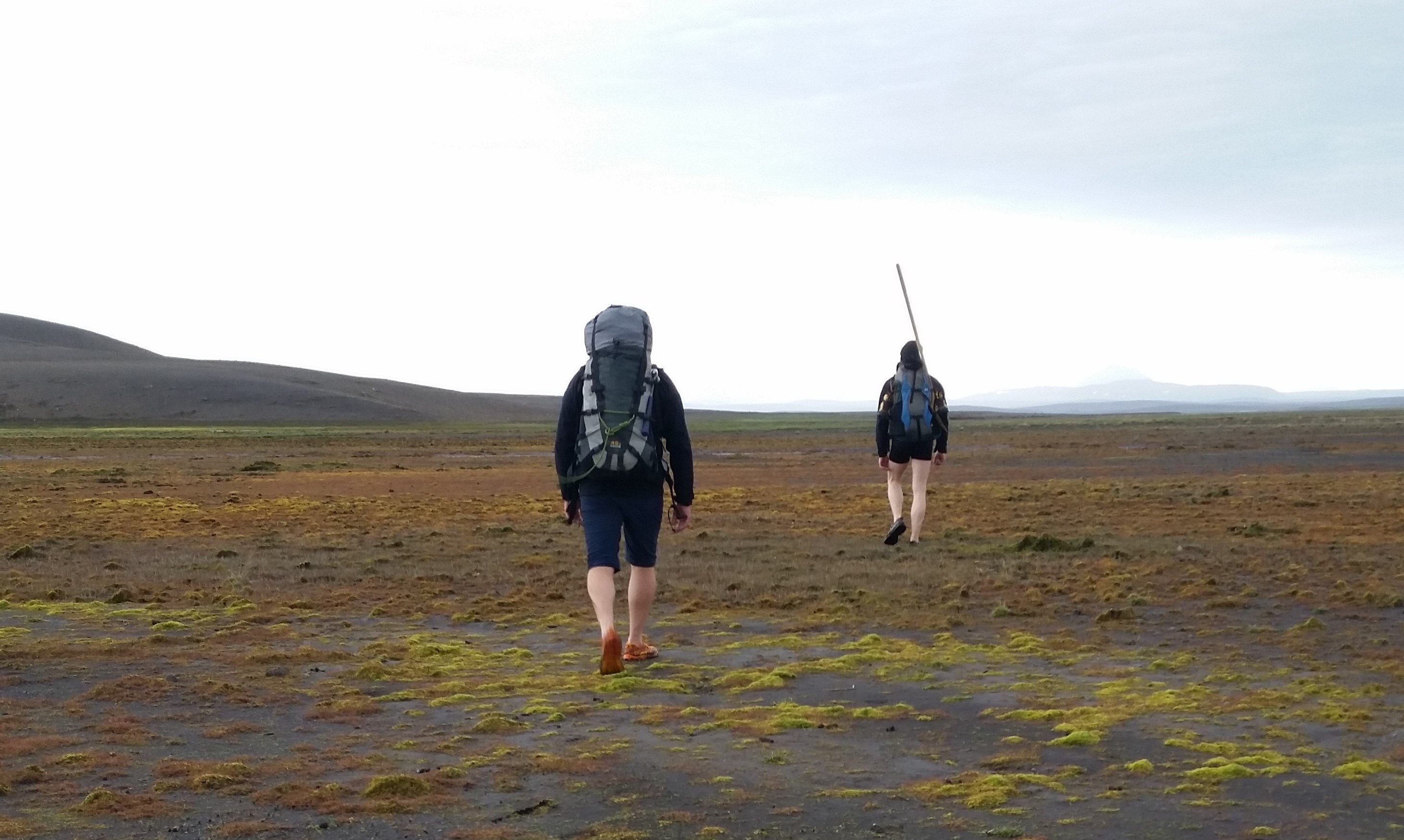Vinna við nýjar heimasíður Umhverfis- og orkustofnunar og Náttúruverndarstofnunar er í gangi. Heimasíða Umhverfisstofnunar er virk á meðan vinnunni stendur. Information in English
History and utilization

Utilisation of Þjórsárver
The pink-footed goose was harvested for centuries in Þjórsárver, most likely until the 18th century. Geese were herded into corrals when they were moulting. The remains of the geese corrals are still visible, but such structures aren’t found anywhere else in Iceland. Herding the geese in the wetlands can’t always have been easy, but the fact that this bird has a herd mentality and gathers in groups must have helped. In the past, moulting swans were also taken in Þjórsárver and killed.
Sheep grazing in Þjórsáver has been known for centuries, but horses were never kept here for grazing, and it shows in the vegetation. Sheep still flock here, but as sheep farming has decreased substantially in recent years, the number of sheep here has shrunk correspondingly and most likely has almost no effect on the oases vegetation anymore. Icelandic moss used to be commonly harvested north of Arnarfell, where it was plentiful.
Outlaws in Þjórsárver
A public road once ran between south and north Iceland through Sprengisandur. Three paths ran through Þjórsárver, and their location was decided by the fords in Þjórsá. These ancient riding paths are still visible in many places. Fjalla-Eyvindur (Eyvindur Jónsson, born 1714) and his common-law wife, Halla Jónsdóttir, lived in exile for at least fifteen years and used various locations in the wilderness as their home. Many stories exists about their hideouts in the highlands. These were probably in Herðubreiðarlindir, Hvannalindir, in Hveravellir and in Þjórsárver, among others. The couple likely stayed in Þjórsárver during the period between 1765 and 1772. It is believed that they built more than one shelter in Þjórsárver, and it is said that Eyvindur declared it his favourite place. Eyvindur was a practical man and utilised all available natural offerings to the best of his abilities. The fact that Eyvindur and Halla made it through the winters is incredible, surviving extreme frost and storms in an area where there were no animals to hunt. As a result, they had to make sure to collect winter reserves, and people from the nearby settlements once found 75 sheep heads by Eyvindur’s cabin near Arnarfell.